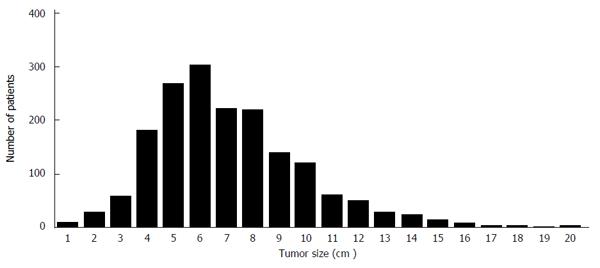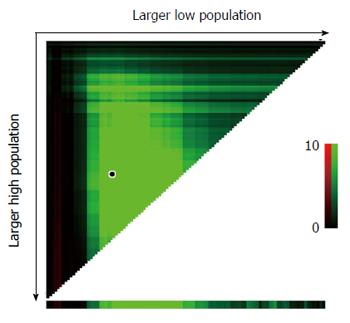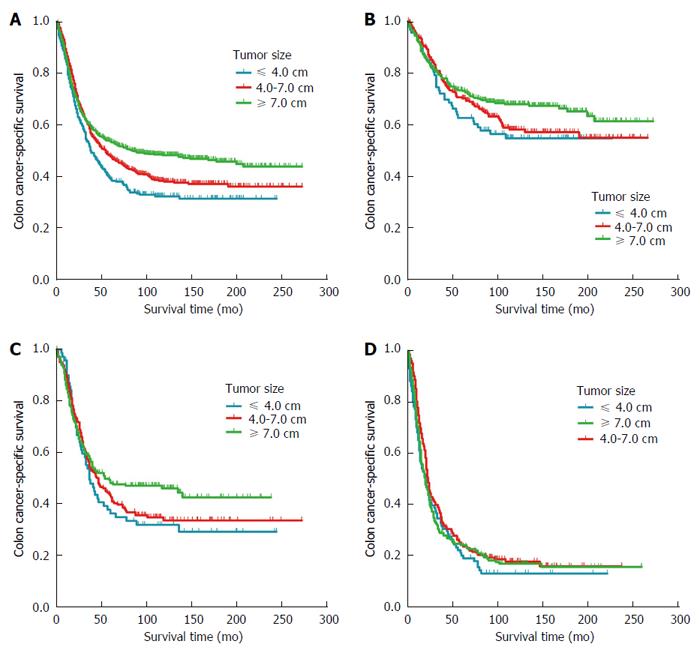Copyright
©The Author(s) 2016.
World J Gastroenterol. Aug 7, 2016; 22(29): 6726-6735
Published online Aug 7, 2016. doi: 10.3748/wjg.v22.i29.6726
Published online Aug 7, 2016. doi: 10.3748/wjg.v22.i29.6726
Figure 1 Frequency distribution of T4bN0-2M0 colon cancer patients from the Surveillance, Epidemiology and End Results database, according to tumor size.
The most frequent tumor size was 6 cm.
Figure 2 X-tile plots of tumor size in the Surveillance, Epidemiology and End Results cohort of patients with T4bN0-2M0 colon cancer.
The x-axis represents all potential tumor size cut-off values from low to high (left to right) that could be used to define the low subset, while the y-axis represents all potential cut-off values from high to low (top to bottom) that could be used to define the high subset. Brighter pixels indicate stronger association between tumor size and CSS. The plot showed the brightest pixel (marked by the black circle) when the study cohort was divided into high, middle, and low subsets using cut-off points of 4.0 and 7.0 cm. Green coloration indicates continuous direct association between increasing tumor size and higher CSS. CSS: CANCER-specific survival.
Figure 3 Kaplan-Meier curves for colon cancer patients from the Surveillance, Epidemiology and End Results database, stratified by tumor size.
A: T4bN0-2M0 group; B: T4bN0M0 subgroup; C: T4bN1M0 subgroup; D: T4bN2M0 subgroup. Survival rate decreased significantly with decreasing tumor size in the case of T4bN0-2 patients (P < 0.001). In subgroup analysis, survival rate decreased significantly with decreasing tumor size in T4bN0 patients (P = 0.024), but this association was not significant for T4bN1 (P = 0.182) or T4bN2 (P = 0.191) patients.
Figure 4 Survival curves for T4bN0-2M0 colon cancer patients from the Fudan University Shanghai Cancer Centre database.
A: Stratified by tumor size; B: Stratified by N stage; C: Stratified by lymphovascular invasion; D: Stratified by perineural invasion.
- Citation: Huang B, Feng Y, Mo SB, Cai SJ, Huang LY. Smaller tumor size is associated with poor survival in T4b colon cancer. World J Gastroenterol 2016; 22(29): 6726-6735
- URL: https://www.wjgnet.com/1007-9327/full/v22/i29/6726.htm
- DOI: https://dx.doi.org/10.3748/wjg.v22.i29.6726












